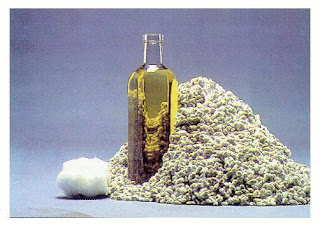 Vitamin E
Vitamin EVitamin E, of which there are four different forms (the tocopherols), is fat soluble.
The four have the same name except with the prefixes alpha-, beta-, gamma-, and delta-, ( the first four letters of the Greek alphabet). The four compounds are closely related, with some difference in the molecular weight and in the position and number of certain molecular constituents.
This vitamin is an antioxidant that serves to prevent the oxidation of some body components, such as unsaturated fatty acids, and is necessary for reproduction.
Almost all foods contain some vitamin E, although corn oil, cottonseed oil, margarine, and peanut oil are especially good sources of this vitamin.
While the symptoms for vitamin E deficiency in humans are not clearly established , experiments with various animals have shown that vitamin E deficiency has an adverse effect on reproduction with apparent irreversible injury to the germinal epithelium.
Other symptoms noted in animal studies include injury to the central nervous system, growth retardation, muscular dystrophy, and interference with normal heart action.
Vitamin E






